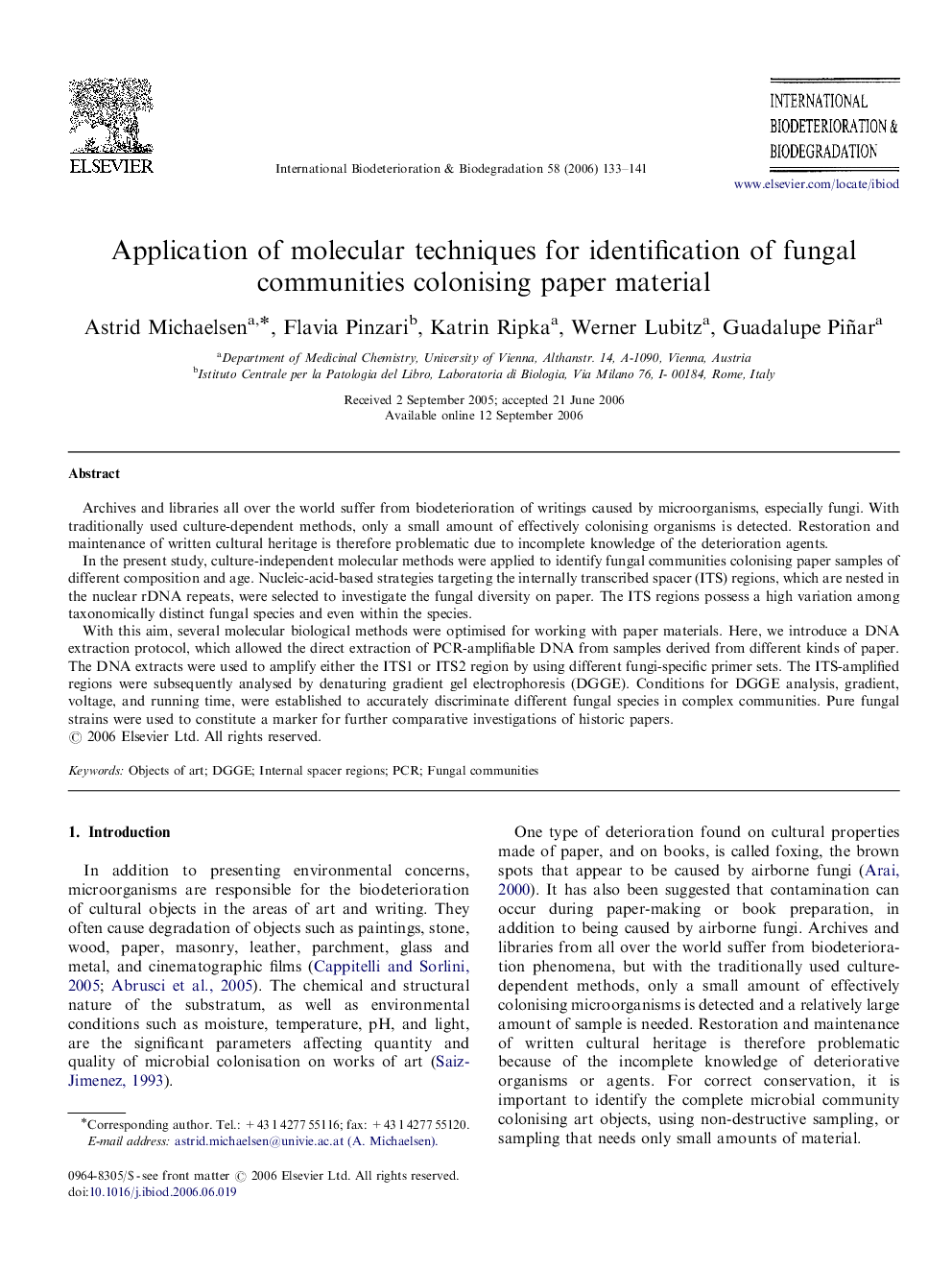| Article ID | Journal | Published Year | Pages | File Type |
|---|---|---|---|---|
| 4366040 | International Biodeterioration & Biodegradation | 2006 | 9 Pages |
Archives and libraries all over the world suffer from biodeterioration of writings caused by microorganisms, especially fungi. With traditionally used culture-dependent methods, only a small amount of effectively colonising organisms is detected. Restoration and maintenance of written cultural heritage is therefore problematic due to incomplete knowledge of the deterioration agents.In the present study, culture-independent molecular methods were applied to identify fungal communities colonising paper samples of different composition and age. Nucleic-acid-based strategies targeting the internally transcribed spacer (ITS) regions, which are nested in the nuclear rDNA repeats, were selected to investigate the fungal diversity on paper. The ITS regions possess a high variation among taxonomically distinct fungal species and even within the species.With this aim, several molecular biological methods were optimised for working with paper materials. Here, we introduce a DNA extraction protocol, which allowed the direct extraction of PCR-amplifiable DNA from samples derived from different kinds of paper. The DNA extracts were used to amplify either the ITS1 or ITS2 region by using different fungi-specific primer sets. The ITS-amplified regions were subsequently analysed by denaturing gradient gel electrophoresis (DGGE). Conditions for DGGE analysis, gradient, voltage, and running time, were established to accurately discriminate different fungal species in complex communities. Pure fungal strains were used to constitute a marker for further comparative investigations of historic papers.
